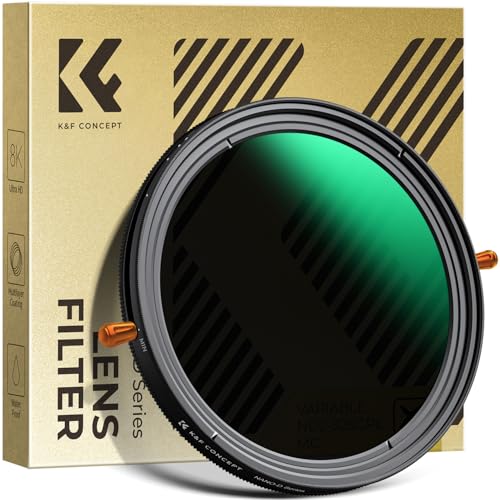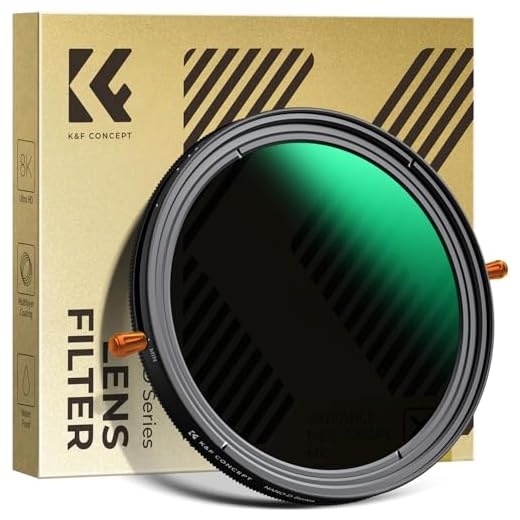


Digital camera filters are accessories that photographers use to enhance their images and achieve specific effects. Filters are physical attachments that are placed in front of the camera lens to modify the light entering the camera. In the digital age, filters can also refer to software tools that mimic the effects of traditional filters.
There are various types of digital camera filters available, each serving a different purpose. Some filters are used to correct color balance, while others are used to reduce glare or enhance contrast. Filters can also be used creatively to add artistic effects to photos, such as blurring or enhancing colors.
Whether you’re a professional photographer looking to fine-tune your images or an amateur looking to experiment with different effects, digital camera filters can be a valuable tool in your photography kit. Understanding how filters work and when to use them can help you take your photography to the next level.
Understanding Digital Camera Filters
Digital camera filters are accessories that can be attached to the lens of a digital camera to alter or enhance the images captured by the camera. These filters can help photographers achieve various creative effects, improve the quality of their photos, or protect the lens from damage.
Types of Digital Camera Filters
There are several types of digital camera filters available, each serving a different purpose:
- UV Filters: These filters are mainly used to protect the camera lens from scratches, dust, and moisture. They also reduce the haze in photos taken in bright sunlight.
- Polarizing Filters: These filters help reduce glare and reflections, improve contrast, and enhance the color saturation of the images.
- Neutral Density Filters: These filters reduce the amount of light entering the camera, allowing photographers to use slower shutter speeds or wider apertures in bright conditions.
- Color Filters: These filters add a color tint to the image, enhancing the mood or creating a specific aesthetic effect.
It’s important for photographers to understand the purpose and effects of different filters to make informed decisions about which filters to use in various shooting situations.
Types of Camera Filters
Camera filters are essential tools for photographers to enhance and manipulate their images. There are various types of camera filters available, each serving a specific purpose. Here are some common types of camera filters:
1. UV Filter
A UV filter is primarily used to protect the camera lens from dust, moisture, and scratches. It also helps reduce the haze caused by ultraviolet light in outdoor photography.
2. Polarizing Filter
A polarizing filter is used to reduce glare and reflections from surfaces such as water or glass. It also enhances the color saturation and contrast in the images, making them more vibrant and appealing.
- Circular Polarizing Filter
- Linear Polarizing Filter
3. Neutral Density Filter
A neutral density filter reduces the amount of light entering the camera without affecting the colors or contrast. It is commonly used in bright conditions to achieve a slower shutter speed for motion blur effects or to widen the aperture for shallow depth of field.
4. Graduated Neutral Density Filter
A graduated neutral density filter is designed to balance the exposure between a bright sky and a darker foreground in landscape photography. It gradually transitions from dark to clear, helping to retain detail in both areas of the image.
These are just a few examples of the many camera filters available to photographers. Each filter has its unique properties and applications, allowing photographers to experiment and create stunning visual effects in their images.
Importance of Camera Filters
Camera filters play a crucial role in enhancing the quality of your photographs. They can help you achieve various effects and correct imperfections in your images. Here are some reasons why camera filters are important:
1. Enhancing colors: Filters like polarizers and color correction filters can help enhance the colors in your photos, making them more vibrant and appealing.
2. Controlling light: Neutral density filters and graduated neutral density filters can help you control the amount of light entering your camera, allowing you to capture better-exposed images in different lighting conditions.
3. Adding effects: Filters like soft focus filters, star filters, and infrared filters can add creative effects to your photos, giving them a unique and artistic touch.
4. Protecting your lens: UV filters and clear filters can protect your camera lens from scratches, dust, and dirt, ensuring that your lens remains in good condition for longer.
Overall, camera filters are essential tools for photographers who want to enhance their images and unleash their creativity. Investing in a variety of filters can help you take your photography to the next level.
UV Filters for Camera
UV filters are used primarily to protect the camera lens from scratches, dust, and fingerprints. They are transparent filters that block ultraviolet light, which can cause hazy and blurry photos. UV filters are especially useful when shooting landscapes or in high-altitude environments where UV light is more intense. Additionally, UV filters can improve the clarity of your images by reducing the amount of UV light that reaches the camera sensor.
When choosing a UV filter for your camera, make sure to select a high-quality filter that does not degrade the image quality. Look for multi-coated filters that reduce reflections and improve light transmission. It is also important to choose the right size filter that matches your lens diameter.
Polarizing Camera Filters
A polarizing camera filter is a versatile tool that can help photographers achieve stunning effects in their images. This type of filter works by reducing glare and reflections from surfaces such as water, glass, and foliage. By using a polarizing filter, photographers can enhance colors, improve contrast, and increase saturation in their photos.
How Polarizing Filters Work
Polarizing filters consist of a special coating that allows only light waves vibrating in a specific direction to pass through. When the filter is rotated, it selectively blocks certain wavelengths of light, reducing glare and reflections. This helps to enhance the clarity and saturation of the image, making colors appear more vibrant and details more defined.
Benefits of Using Polarizing Filters
Some key benefits of using polarizing filters include:
- Reduced Glare: By cutting down on reflections, polarizing filters can help capture clear, crisp images without unwanted glare.
- Enhanced Colors: The filter can deepen the blues of the sky, make foliage appear richer, and create more vivid colors overall.
- Improved Contrast: Polarizing filters can boost contrast and make textures and details in the image stand out more effectively.
Neutral Density Filters
Neutral density filters are essential tools for photographers looking to control the amount of light entering their camera without affecting the color balance of the image. These filters are particularly useful in bright lighting conditions, allowing photographers to achieve longer exposure times or wider apertures without overexposing the image.
Neutral density filters come in different strengths, measured in stops, which indicate how much light they block. Common strengths include 1-stop, 2-stop, and 3-stop filters, with higher stop values blocking more light. These filters are typically made of high-quality optical glass and can be screwed onto the front of a camera lens.
Types of Neutral Density Filters:
| Type | Description |
|---|---|
| Fixed ND Filters | These filters have a set light-blocking strength and cannot be adjusted. They are ideal for situations where a consistent amount of light reduction is needed. |
| Variable ND Filters | These filters offer adjustable light-blocking capabilities, allowing photographers to dial in the desired amount of light reduction by rotating the filter. They provide more flexibility in varying lighting conditions. |
Color Filters for Camera
Color filters for digital cameras are essential accessories that can enhance your photography by allowing you to manipulate the colors in your images. These filters are placed in front of the camera lens and can alter the way light passes through to the camera sensor, resulting in different color effects.
There are several types of color filters available for digital cameras, each designed to create a specific color effect. Some common color filters include:
| 1. Red Filter: | Enhances red tones and can create a dramatic effect by darkening blue skies and emphasizing clouds. |
| 2. Blue Filter: | Enhances blue tones and can create a cooler, more calming effect in your images. |
| 3. Green Filter: | Enhances green tones and can be useful for landscape photography by emphasizing foliage. |
| 4. Yellow Filter: | Can enhance contrast and create a warmer tone in your images. |
Experimenting with different color filters can add a creative element to your photography and help you achieve the desired mood or effect in your images. Remember to choose the right filter based on the lighting conditions and the effect you want to create.
Special Effects Filters
Special effects filters are designed to add creative elements to your photos and videos. These filters can enhance colors, create unique textures, or distort images for artistic purposes. There are various types of special effects filters available, each offering a different effect:
1. Color Filters
Color filters can intensify or change the colors in your images, creating a more vibrant or dramatic look. These filters can be used to enhance specific colors or create a monochromatic effect.
2. Distortion Filters
Distortion filters alter the shape or perspective of your image, creating surreal or abstract effects. These filters can warp the image, create a fisheye effect, or simulate a kaleidoscope pattern.
FAQ
What is the purpose of using digital camera filters?
Digital camera filters are used to enhance and improve the quality of photographs by adjusting colors, reducing glare, enhancing contrast, and creating special effects. They can also protect the camera lens from scratches, dust, and moisture.
How do digital camera filters affect the final image?
Digital camera filters can have a variety of effects on the final image. For example, a polarizing filter can reduce reflections and enhance colors, while a neutral density filter can reduce the amount of light entering the camera, allowing for longer exposures. Different filters can create different moods and effects in the photograph.







